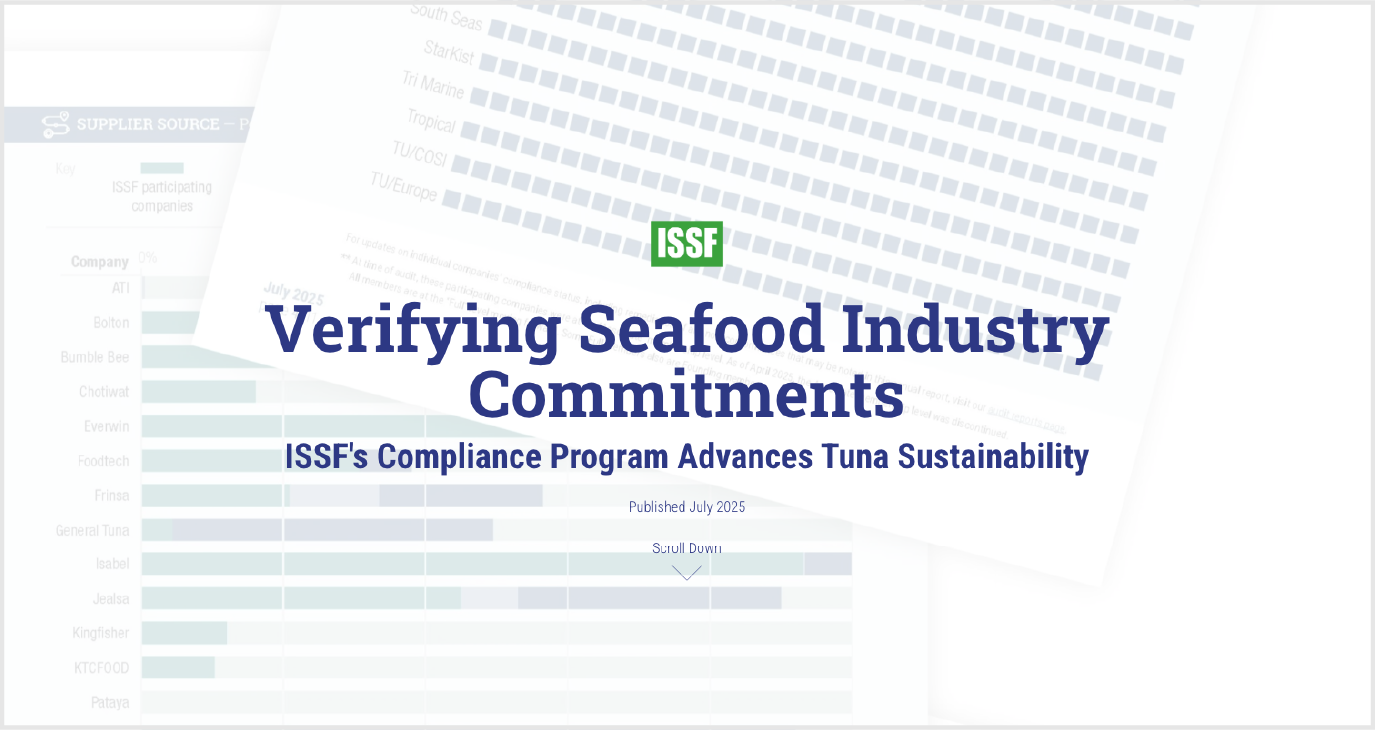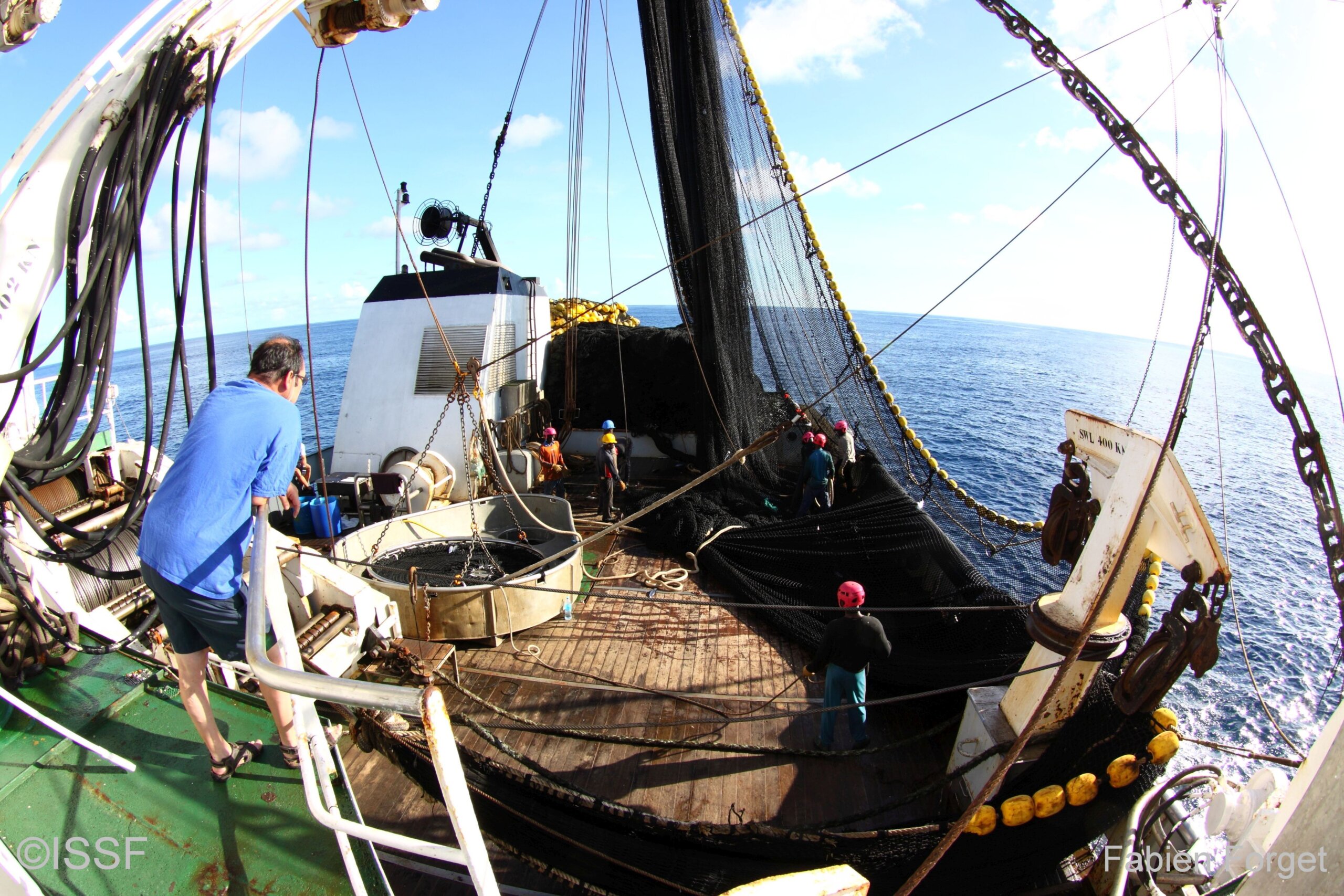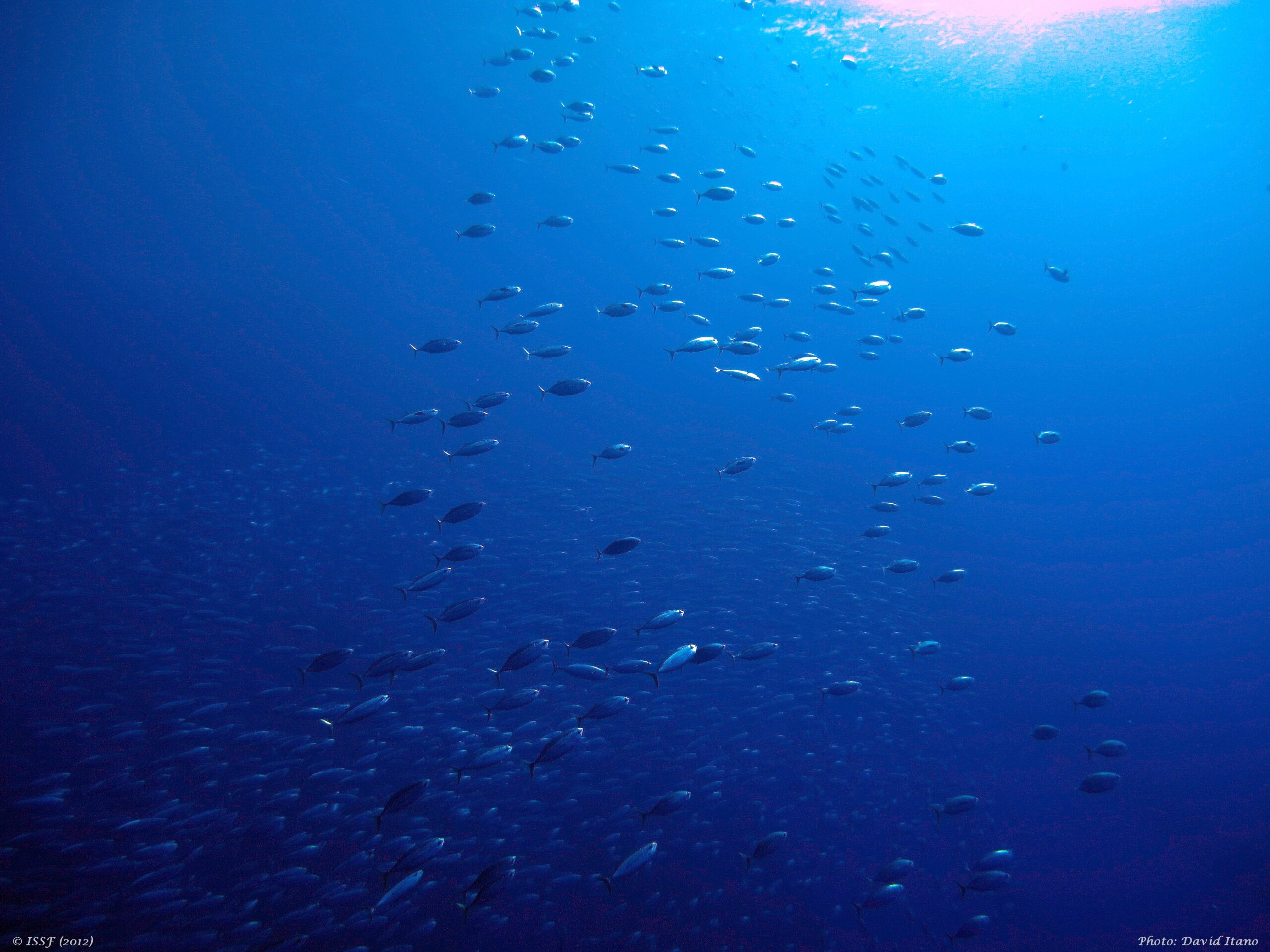3.7 Transactions with Vessels or Companies with Vessel-Based FAD Management Policies
Initially Adopted
- October 23, 2019
Conformance
ISSF is committed to supporting better FAD management, globally, and recognizes that it is an important component to meet the MSC Standard without conditions.
To further support the implementation of existing RFMO conservation measures and recommendations for FAD data collection and reporting and the use of non-entangling FAD designs that do not use any netting in any components, including both the raft and the tail, and the use of biodegradable FAD designs that are also fully non-entangling, and to promote the development and implementation of FAD recovery policies, strategies to mitigate shark bycatch in purse seine tuna fisheries and the voluntary provision of FAD buoy data to strengthen FAD management:
- Processors, traders, importers, transporters, marketers and others involved in the seafood industry shall conduct transactions only with those purse seine vessels whose owners develop and make public FAD Management Policies that include the activities purse seine and supply vessels are undertaking (if any) on the following elements:
(a) Comply with flag state and RFMO reporting requirements for fisheries statistics by set type;
(b) Report additional FAD buoy data (FAD daily position data and echosounder acoustic records) for use by RFMO science bodies;
(c) Support science-based limits on the overall number of FADs used per vessel and/or FAD sets made;
(d) Use only non-entangling FADs to reduce ghost fishing;
(e) Mitigate other environmental impacts due to FAD loss including through the use of biodegradable FADs and FAD recovery policies;
(f) For silky sharks (the main bycatch issue in FAD sets) implement further mitigation efforts. - In developing a FAD Management Policy, purse seine vessels and purse seine vessel owning companies should refer to ISSF Technical Paper 2019-11 (or any subsequent revision) in designing the activities for each element.
- With respect to the element on mitigating other environmental impacts due to FAD loss (item e above), by 1 January 2023, public FAD Management Policies developed under this measure shall include a statement that purse seine vessels and supply vessels covered by the policy are participating in trial(s) of biodegradable FAD designs and/or FAD recovery programs that include the participation of the relevant RFMO science bodies and/or coastal States, national scientists, and/or ISSF scientists to monitor experimental design.
- With respect to the element on the use of only non-entangling FADs (item d above), no later than 1 April 2025, public FAD management policies developed under this measure shall include a statement that purse seine vessels and supply vessels covered by the policy will from this date only deploy or redeploy (i.e., will be placed in the water) fully non-entangling FADs, without any netting in any components, including both the raft and the tail. From 1 April 2025, where practicable, the purse seine vessels and supply vessels should retrieve any encountered pre-existing non-fully NEFAD (whether a set is done or not) which is not in compliance with this measure.
- With respect to the element on reporting additional FAD buoy daily position data for use by RFMO science bodies (item b above), by 1 January 2023, public FAD Management Policies developed under this measure shall include a statement that purse seine vessels and supply vessels covered by the policy are reporting FAD position data to the relevant RFMO science bodies and/or national scientific institutions and/or its flag State, with a maximum time lag of 90 days. Data submissions must include the vessel name and IMO number (if available). Deployments should be identified in the data submissions when possible. In the event that purse seine vessels and supply vessels covered by the policy report these data to national scientific institutions and/or its flag State, they shall document that they requested that these data be made available to the relevant RFMO for scientific purposes.
- With respect to the element on reporting additional FAD buoy echosounder acoustic biomass data for use by RFMO science bodies (item b above), by 1 April 2024, public FAD Management Policies developed under this measure shall include a statement that purse seine vessels and supply vessels covered by the policy are reporting FAD echosounder biomass data to the relevant RFMO science bodies and/or national scientific institutions and/or its flag State, with a maximum time lag of 90 days. Data submissions must include the vessel name and IMO number (if available). In the event that purse seine vessels and supply vessels covered by the policy report these data to national scientific institutions and/or its flag State, they shall document that they requested that these data be made available to the relevant RFMO for scientific purposes.
- For purposes of this measure, a policy is “public” if it is published on the owner or company’s website or is otherwise available to the general public.
- For purposes of this measure, a large-scale purse seine vessel is defined as those with at least 335 m3 of fish hold volume.
Download the Electronic Monitoring Vendors and Data Submission Information (PDF) for (1) an EM vendors list; and (2) contact information for submitting (a) FAD tracking and echosounder biomass data; (b) bycatch data; and (c) data submission guidelines.
RELATED CONSERVATION MEASURES
RELATED CONTENT
-
Conservation Measures
-
Vessel Owner Information
-
Data Reporting Information
-
Participating Company Audit Protocol
-
PVR Audit Protocols
-
Compliance Reports






